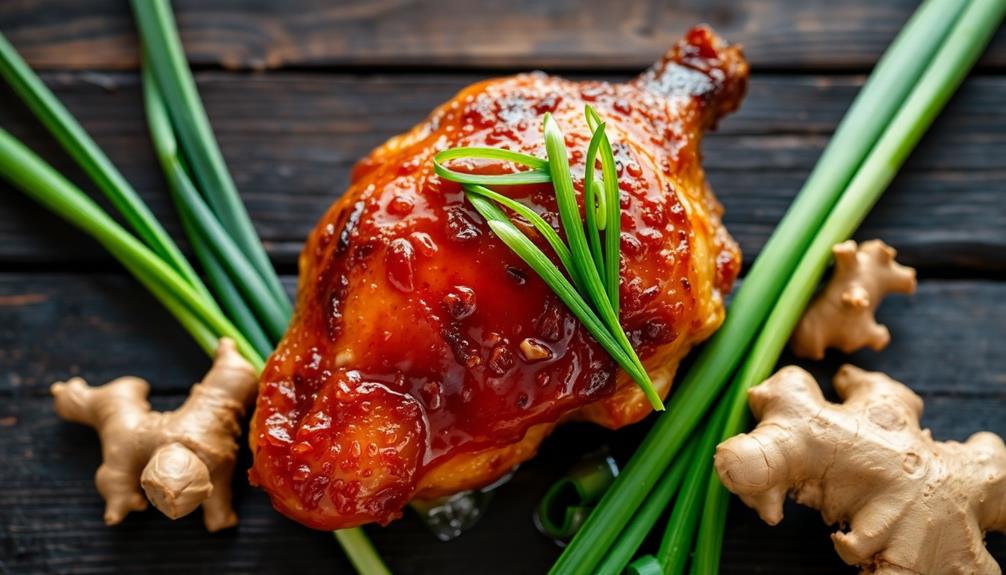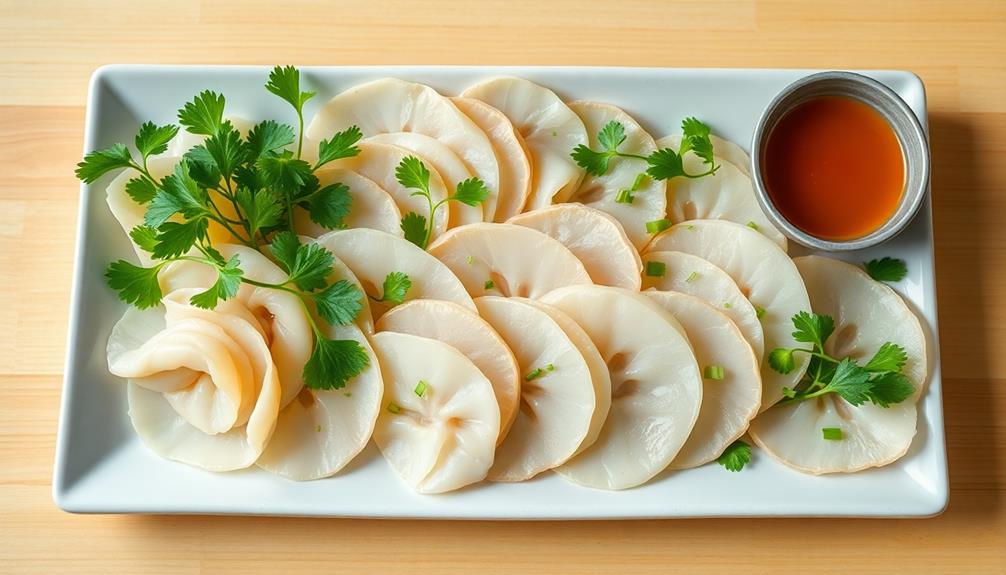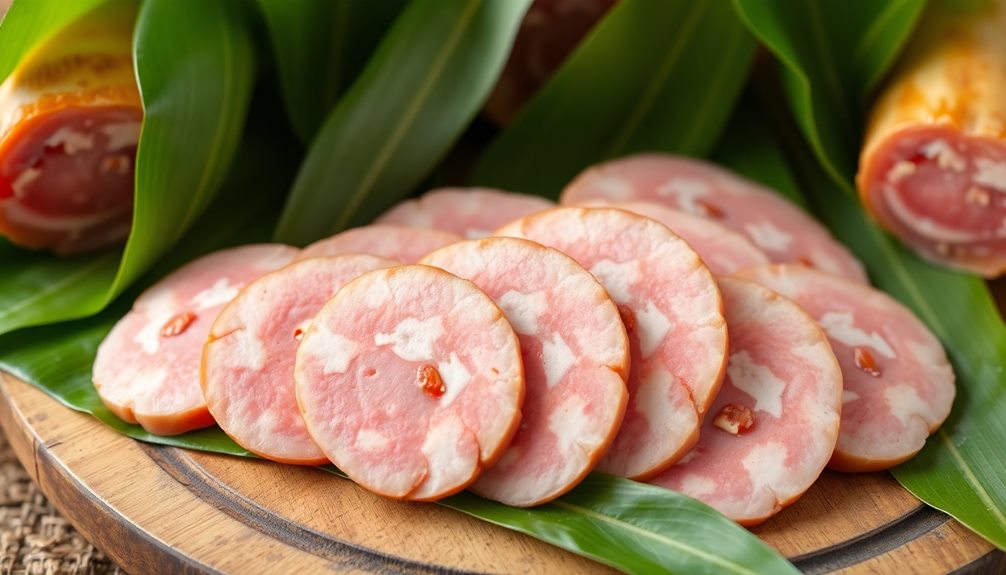Vietnam's steamed rice cake, Bánh Đúc, is a delightful traditional treat that's been cherished for centuries. It symbolizes family gatherings and cultural heritage, reflecting Vietnam's rich agricultural roots. The key ingredients – glutinous rice flour, water, and salt – are carefully prepared, then steamed to perfection. The result is a soft, savory cake that can be enjoyed on its own or with tasty toppings like fish sauce, herbs, and peanuts. Bánh Đúc's enduring legacy continues to inspire modern chefs, showcasing the resilience and adaptability of Vietnam's culinary traditions. There's more to discover about this beloved Vietnamese staple. In addition to its classic form, variations of Bánh Đúc can include sweet versions, often incorporating coconut milk or green mung beans for a different flavor profile. The simplicity of the Vietnamese rice cake ingredients allows for endless creativity, giving chefs the freedom to experiment while preserving its traditional essence. Whether served in a humble home or an upscale restaurant, Bánh Đúc remains a testament to Vietnam’s culinary ingenuity.
Key Takeaways
- Bánh Đúc is a traditional Vietnamese steamed rice cake that holds deep cultural significance, connecting generations through shared recipes and agricultural heritage.
- The dish has a rich history spanning centuries, with regional variations reflecting the diverse culinary traditions across different parts of Vietnam.
- Precise preparation techniques, including soaking, grinding, and steaming the rice batter, are crucial for achieving the desired texture and flavor.
- Contemporary adaptations of Bánh Đúc incorporate diverse ingredients and fusion with international cuisines, while still maintaining its core cultural identity.
- The enduring legacy of Bánh Đúc showcases the resilience and adaptability of traditional Vietnamese cuisine in the face of modernization.
History
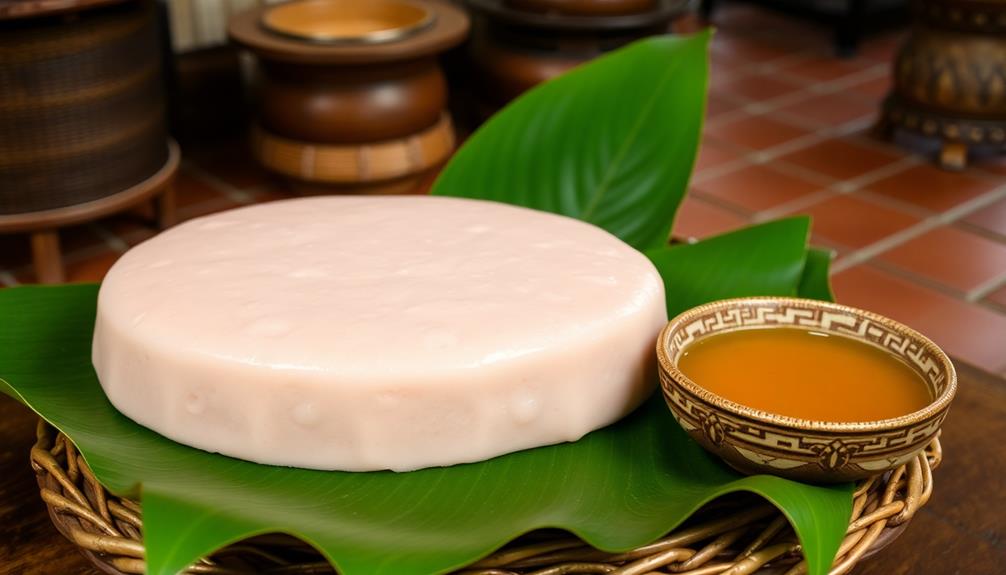
Bánh đúc, a traditional Vietnamese steamed rice cake, has a rich and storied history dating back centuries. This beloved delicacy has been a staple in Vietnamese cuisine, enjoyed by generations of families. The name "bánh đúc" translates to "molded cake," referring to the unique process of shaping the rice batter into molds before steaming.
The origins of bánh đúc can be traced to the ancient Đại Việt kingdom, where it was a cherished part of traditional celebrations and festivities. Over time, the recipe and preparation methods have evolved, with different regions developing their own unique variations. Some are made with the addition of mung beans or pandan leaves, imparting distinct flavors and textures.
Today, bánh đúc remains a beloved comfort food, often served as a snack or alongside savory dishes. Its simplicity and versatility have made it a beloved part of Vietnam's culinary heritage, connecting families and communities through the shared enjoyment of this timeless delicacy.
Recipe
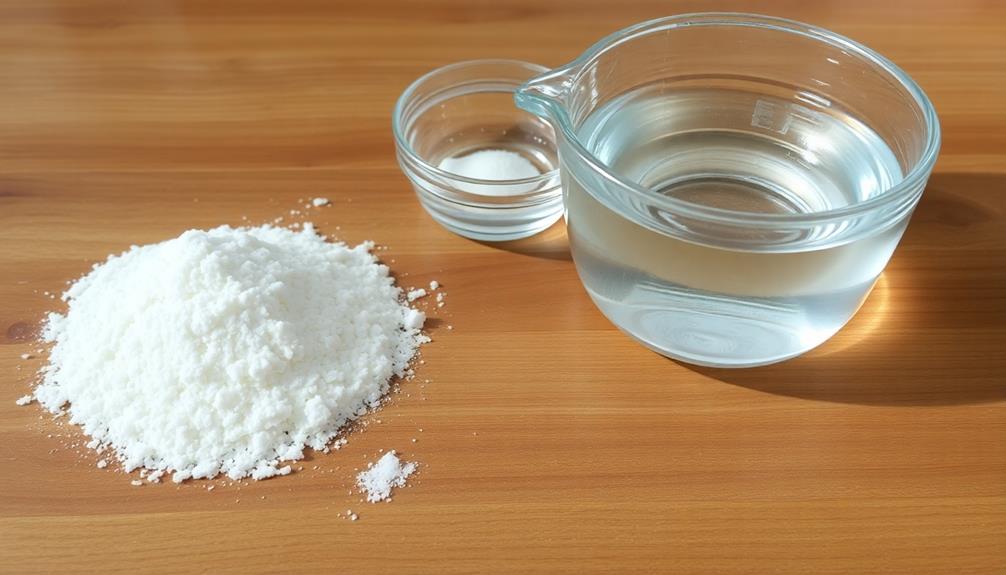
Bánh đúc is a beloved traditional Vietnamese steamed rice cake that has been a staple in the country's cuisine for generations. This delicate and delectable dish is often enjoyed as a snack or a light meal, and its preparation can be a true culinary art form.
The key to crafting an authentic bánh đúc lies in the careful selection and preparation of the ingredients. The rice used in this recipe is typically a special variety that imparts a unique texture and flavor to the final product.
Ingredients:
- 2 cups of glutinous rice flour
- 1 cup of water
- 1/4 teaspoon of salt
- 1/2 cup of mung bean paste (optional)
Instructions:
In a large bowl, mix the glutinous rice flour and salt. Gradually add the water, stirring constantly until the mixture forms a smooth, sticky dough.
Cover the dough and let it rest for 30 minutes. Grease a steamer or a bamboo steamer basket, then place the dough inside. Steam the bánh đúc for about 30 minutes, or until it's cooked through and has a translucent, gelatinous texture.
When serving, you can top the bánh đúc with mung bean paste or your desired savory or sweet toppings. To ensure the best texture, it's important to serve the bánh đúc immediately after steaming. Enjoy this delightful Vietnamese treat!
Cooking Steps
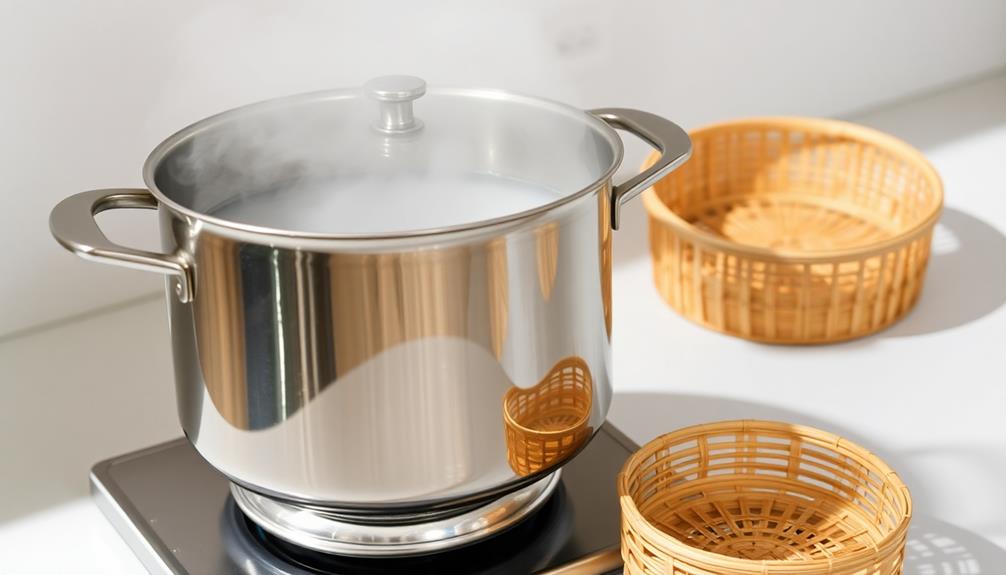
First, you'll need to soak the rice for several hours to get it nice and soft.
Then, grind the soaked rice into a smooth, lump-free batter.
Next, steam the batter in a special mold to give it its iconic shape.
Once it's all cooked, let the bánh đúc cool a bit before serving it up with your favorite toppings!
Step 1. Soak Rice for Several Hours
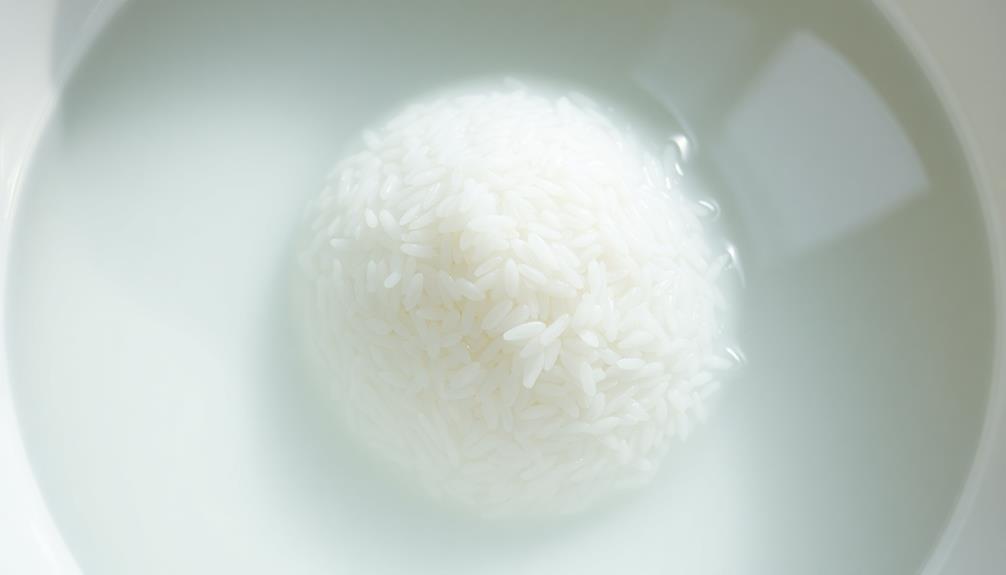
To begin the process, you'll need to soak the rice for several hours. This crucial step ensures the rice grains become soft and pliable, making them easier to work with during the steaming process.
Start by rinsing the rice thoroughly under cold running water. This helps remove any impurities or excess starch.
Then, place the rinsed rice in a large bowl and cover it with fresh water. Let the rice soak for at least 4-6 hours, or even overnight if possible. The longer soaking time will result in a softer, more delicate texture for your bánh đúc.
Periodically check the water level and add more if needed to keep the rice submerged.
Once the soaking is complete, drain the rice using a fine-mesh strainer or colander. You're now ready to move on to the next step in creating this beloved Vietnamese steamed rice cake!
Step 2. Grind Soaked Rice Into Smooth Batter
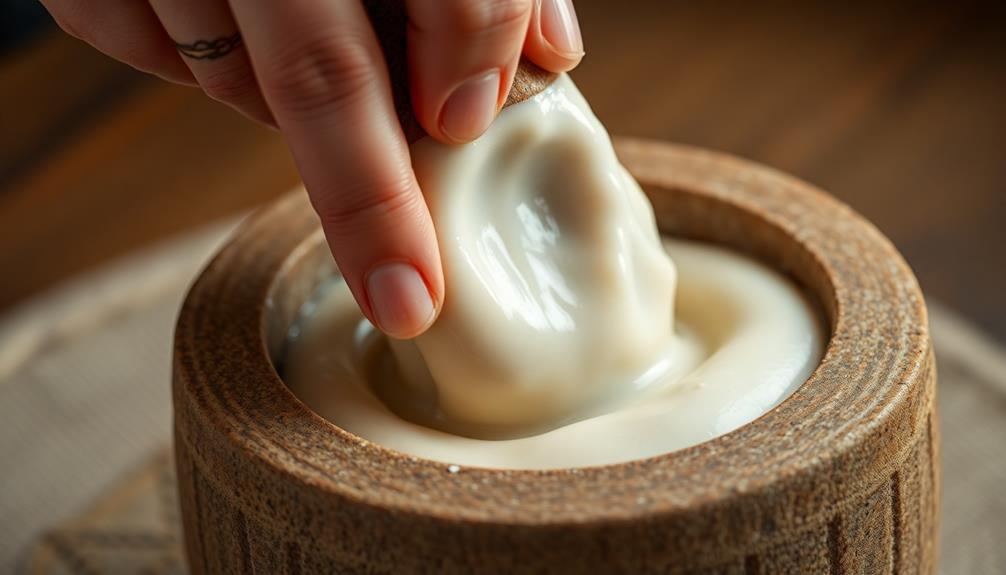
After soaking the rice, the next step is to grind it into a smooth batter. Get ready to unleash your inner chef!
Gather your trusty mortar and pestle or a blender, and let's get to work. Carefully pour the soaked rice into your chosen tool. Grind away, pressing and swirling the rice until it transforms into a silky-smooth consistency.
Don't be afraid to add a splash of water if the batter becomes too thick. You want it to have a luscious, pourable texture. Smooth, lump-free batter is the key to achieving those perfect, pillowy bánh đúc cakes.
As you grind, imagine the delightful aroma of the finished treats. Can't you just taste the sweet, fluffy goodness? Keep going until the batter is just right, then it's time to move on to the next exciting step.
Get ready to steam those cakes to perfection!
Step 3. Steam Batter in Mold

Now that you've prepared the silky-smooth batter, it's time to steam those delightful bánh đúc cakes!
Grab your special steaming mold and give it a quick greasing to prevent sticking. Carefully pour the batter into the mold, filling it about three-quarters full. Cover the mold with a lid and place it in your steaming basket.
Steam the bánh đúc for about 15-20 minutes, until they're firm and cooked through. Be sure to keep a watchful eye, as you don't want them to overcook!
Once they're ready, carefully remove the mold from the steamer and let the cakes cool slightly.
Now comes the fun part – gently release the bánh đúc from the mold. Admire their soft, fluffy texture and the beautiful patterns pressed into the surface.
Serve them warm, perhaps with a drizzle of sweetened condensed milk or a sprinkle of toasted sesame seeds. Enjoy the delicate flavors and comforting texture of this classic Vietnamese treat!
Step 4. Allow Batter to Cool

Once the batter is prepared, allow it to cool slightly before proceeding. This resting period is crucial, as it helps the batter firm up and become easier to work with. You don't want to rush this step, or your bánh đúc may not hold its shape as well.
While the batter cools, take a moment to prepare your steaming equipment. Make sure your pot or steamer is clean and ready to go. You'll also want to lightly grease the molds or ramekins you'll be using to shape the cakes.
Once the batter has had a chance to cool, it's time to scoop it into the prepared molds. Be gentle and take your time, ensuring each one is filled evenly. Cover the molds and place them in the steamer, being careful not to overcrowd the pot.
Steam the bánh đúc for about 15-20 minutes, or until they're firm and cooked through. Remove the molds from the steamer and let the cakes cool slightly before unmolding them. Serve warm and enjoy this delightful Vietnamese delicacy!
Step 5. Serve With Desired Toppings

One of the best parts about enjoying traditional Vietnamese báng đúc is the opportunity to customize them with your choice of delicious toppings. You can start by drizzling on a savory fish sauce, adding a sprinkle of chopped herbs like cilantro or scallions, or even a few crunchy peanuts for extra texture.
If you prefer a sweeter version, try topping your báng đúc with a sweet syrup, shredded coconut, or sliced tropical fruits like mango or pineapple.
The possibilities are endless! Get creative and have fun mixing and matching different flavors and textures. Maybe you'll discover a new favorite combination.
Serve your báng đúc warm, with the toppings arranged beautifully on top. This dish is sure to delight your taste buds and make for a truly memorable Vietnamese culinary experience.
Final Thoughts
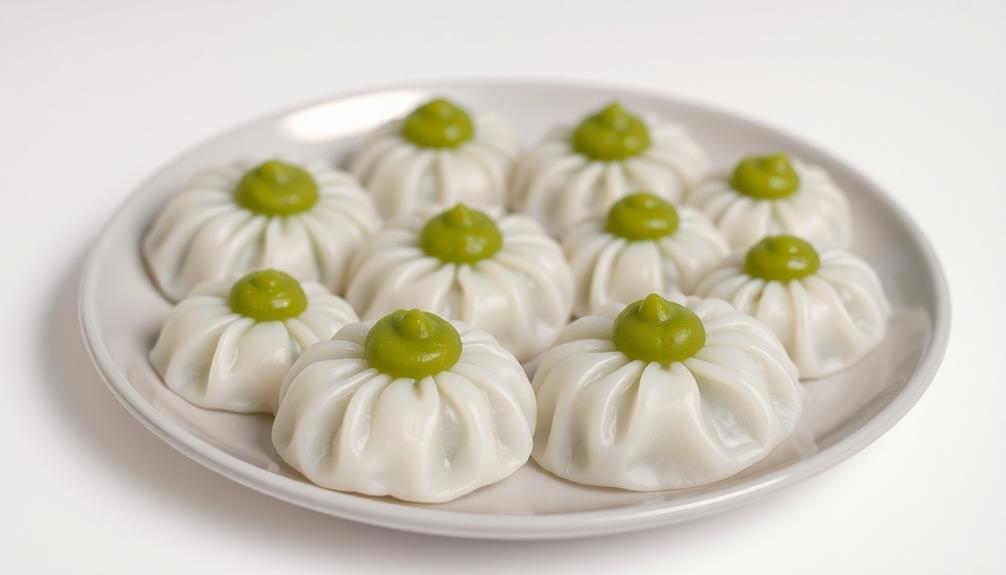
The delightful journey through Vietnam's traditional bánh đúc has offered a captivating glimpse into the rich cultural tapestry that defines this beloved delicacy.
From the intricate preparation methods to the vibrant flavors and textures, this steamed rice cake has captured the hearts and taste buds of generations.
As you savor the final bites, it's clear that bánh đúc is more than just a meal – it's a celebration of Vietnam's culinary heritage and the enduring bonds of family and community.
Whether enjoyed as a special occasion treat or a comforting daily staple, this versatile dish continues to evolve, blending time-honored traditions with modern twists.
As you bid farewell to this flavorful adventure, take a moment to appreciate the enduring legacy of bánh đúc and the profound ways it connects us to the vibrant spirit of Vietnam.
Its timeless appeal ensures that this delightful delicacy will continue to delight and inspire for years to come.
Frequently Asked Questions
What Are the Typical Fillings Used in Bánh đÚc?
The typical fillings used in bánh đúc include savory ingredients like mung bean, pork, dried shrimp, or mushrooms. You'll often find these delicious rice cakes served with a dipping sauce on the side for extra flavor.
How Long Does It Take to Make Bánh đÚc?
To make bánh đúc, the process takes around 2-3 hours. You'll need to soak the rice, steam the cakes, and prepare your desired fillings before assembling and steaming the final product.
Can Bánh đÚc Be Frozen for Later Use?
Yes, you can freeze bánh đúc for later use. The steamed rice cakes can be stored in the freezer for up to 3 months. Just be sure to thaw them before reheating and serving.
Are There Any Variations of the Traditional Bánh đÚc Recipe?
Yes, there are several variations of the traditional bánh đúc recipe. You can add ingredients like mung beans, coconut, or sweet potatoes to create different flavors and textures. The possibilities are endless for customizing this classic Vietnamese dish.
Where Can I Find the Best Bánh đÚc in Vietnam?
You can find the best bánh đúc in Vietnam by visiting local markets and street food stalls, especially in regions like the Mekong Delta, where this delicacy is a beloved regional specialty.

